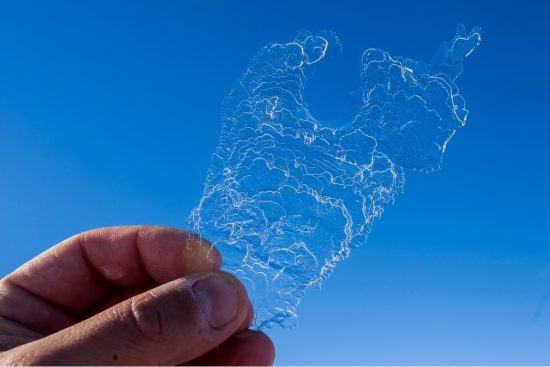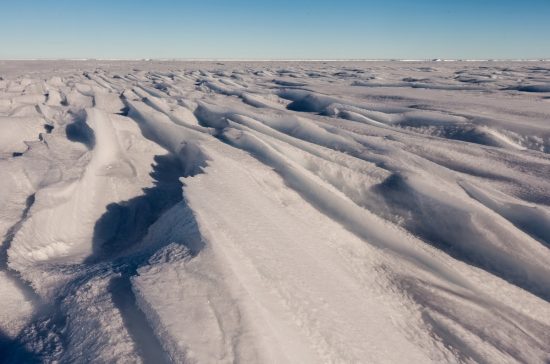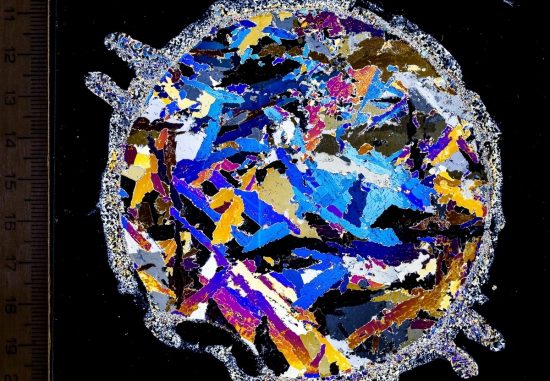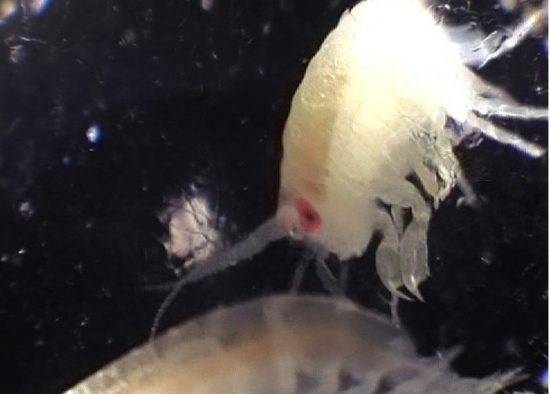





For
the first time, sea ice physicists at the Alfred Wegener Institute (AWI) have
developed a new method of efficiently measuring the distribution and thickness
of a sub-ice platelet layer in the Antarctic.
This
layer, called platelet ice, comprises delicate ice crystals beneath the coastal
sea ice. Although it was discovered more than a century ago, very little is
known about it. Nevertheless, the platelet ice is of central importance as it
influences sea ice properties and the associated ecosystem in various ways.
Thus, it serves as an indicator of the state of the melting ice shelves.
Every year, the ocean surrounding the
Antarctic continent freezes to form the sea ice. However, this is not the only
ice being formed. Beneath the surface, at the same time, a layer of loose ice
crystals is formed. Its appearance is similar to the crushed ice found in
cocktail glasses – the difference being that the ice crystals in the platelet
layer are disc-shaped and as thin as one millimetre.
In past decades, scientists discovered
that platelet ice plays a significant role in the sea ice mass balance in some
regions around the Antarctic. The algae that thrive on the platelets serve as
food for the many small crustaceans and fish that seek shelter between the
platelets from predators like seals and penguins.
Because it is concealed beneath the sea
ice, many scientists usually come across platelet ice by accident – for instance, when they drill through the sea ice to measure its
thickness. Now, scientists from the Alfred Wegener Institute, Helmholtz Centre
for Polar and Marine Research, the Jacobs University Bremen and Uppsala
University have developed an efficient method of determining the distribution,
thickness and volume of platelet ice over a large area. Their results have been
published in the latest issue of Geophysical Research Letters.
Previously, electromagnetic (EM) induction
sounding devices were used to measure the electrical conductivity of the
subsurface layers. As the electrical conductivity of the solid sea ice differs
from that of the salty seawater below it, the transition between the two can be
pinpointed.
However, the transition between the sea
ice and platelet ice is less distinct, and conventional EM methods which used
just one frequency were inadequate. Scientists then invented a ground-based,
multi-frequency EM induction sounding device that used several different
frequencies, allowing them to accurately pinpoint the transitions without
having to drill holes through the ice and using measuring tapes.
Using the new device, the scientists
conducted surveys in the frozen Atka Bay, which is located in the Weddell Sea,
near the German research station Neumayer III. The device was placed on a kayak
which was attached to a snowmobile. They then repeatedly drove across the sea
ice of the bay for weeks, several hours at a time.
“One of the things we noticed was that the
evolution of the platelet layer has an annual rhythm,” said AWI sea ice
physicist and co-author Dr Mario Hoppmann. The platelets start to accumulate in
June, as the Antarctic winter starts. The platelet layer grows over the course
of the winter, until it is several metres thick in December. After this time,
it shrinks during the summer.
The researchers believe that platelet ice
plays an important role in the ice regime of the Antarctic. This is because
while the sea ice in Atka Bay has an average thickness of two metres, the
thickness of the platelet layer beneath averages five metres over the course of
a year. In some places, it is even ten metres.
This means that a considerable amount of
ice exists in the form of platelets. According to Hoppmann, “To understand the
situation of the Antarctic sea ice and to assess a possible influence of
climate change, it is likely that more account must be taken of platelet ice.”
Link to study: http://onlinelibrary.wiley.com/doi/10.1002/2015GL065074/full
Video:
https://www.youtube.com/watch?v=cub0w7S7Mh8
 Mares
Mares 8th February 2016
8th February 2016 Weddell Sea
Weddell Sea